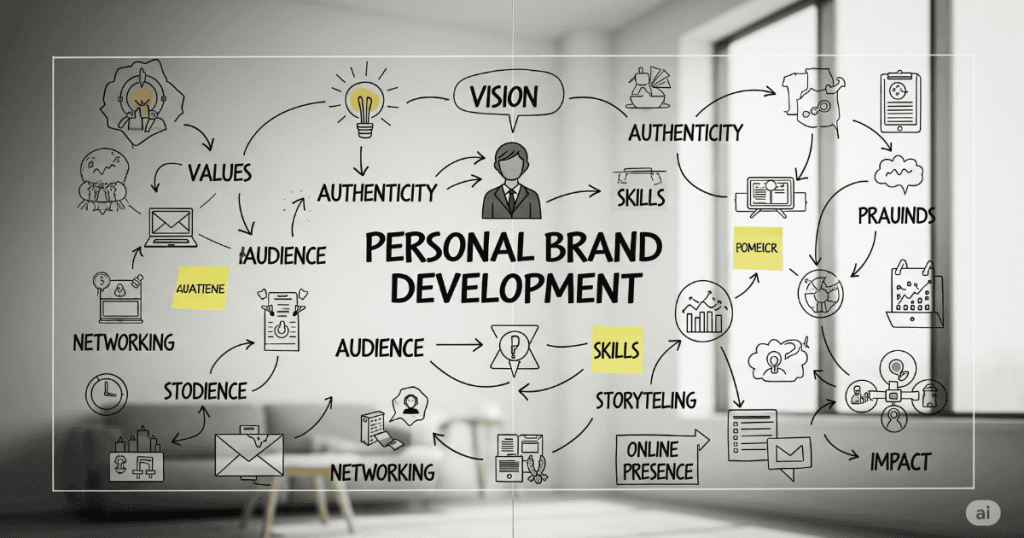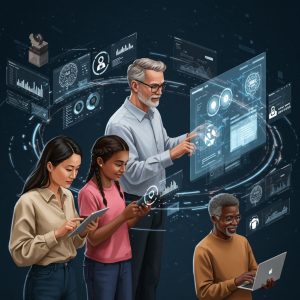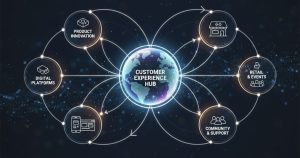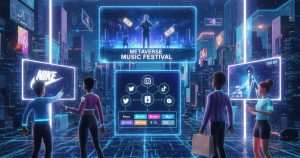The Future of Personal Branding: 7 Trends Leaders Must Watch

Personal branding has evolved far beyond polished LinkedIn headshots and carefully crafted elevator pitches. What once centered on traditional networking and resume building has transformed into a dynamic, multi-platform ecosystem that shapes careers, influences industries, and drives business success.
The landscape of building a personal brand continues to shift at breakneck speed. Artificial intelligence reshapes content creation, virtual reality opens new networking frontiers, and authenticity has become the currency of trust. Leaders who understand these emerging patterns will position themselves ahead of competitors still clinging to outdated personal branding strategies.
This evolution impacts more than individual career trajectories. Companies increasingly recognize that strong leadership branding drives organizational success, attracts top talent, and builds market credibility. The personal branding trends emerging now will define how we connect, communicate, and lead throughout the next decade.
Understanding where personal brand development is headed isn’t just beneficial—it’s essential for sustained leadership success. The strategies that worked five years ago may actually harm your reputation today, while the approaches gaining traction now will become tomorrow’s standards.
AI-Powered Content Creation Transforms Personal Brand Development

Artificial intelligence has fundamentally altered how professionals create and distribute branded content. Leaders now leverage AI tools to generate ideas, optimize posting schedules, and even create initial drafts of articles and social media posts.
This technological shift doesn’t replace human creativity—it amplifies it. Smart leaders use AI to handle routine content tasks while focusing their energy on strategic thinking and authentic relationship building. The most successful approach combines AI efficiency with genuine human insight.
However, this trend brings challenges. As AI-generated content becomes more prevalent, audiences develop sharper instincts for detecting authentic voices versus automated messaging. Leaders must find the sweet spot between leveraging technology and maintaining their unique perspective.
The key lies in using AI as a research and optimization tool rather than a replacement for personal thought leadership. Successful leaders employ these technologies to enhance their natural communication style, not mask it.
Micro-Influencer Leadership Replaces Mass Appeal Strategies
The era of trying to appeal to everyone is ending. Modern branding techniques now emphasize building deep connections with specific audiences rather than casting the widest possible net. This shift reflects broader changes in how people consume information and make decisions.
Leaders who embrace micro-influence focus on becoming the go-to expert within their niche. They prioritize quality engagement over follower counts, meaningful conversations over viral moments, and sustained influence over temporary attention.
This approach proves particularly effective for B2B leaders and industry specialists. Rather than competing in oversaturated general business content, they establish authority within specific sectors, functions, or methodologies.
The micro-influencer model also aligns with authenticity trends. Audiences trust leaders who demonstrate deep expertise in focused areas more than those claiming broad competence across multiple domains.
Video-First Communication Becomes Non-Negotiable
Personal branding evolution has made video content essential rather than optional. Platforms continue prioritizing video in their algorithms, and audiences increasingly expect visual communication from their leaders.
This trend extends beyond social media posts. Video now plays a crucial role in professional presentations, team communications, and client interactions. Leaders comfortable with video communication gain significant advantages in building trust and demonstrating competence.
The shift toward video doesn’t require Hollywood production values. Authenticity matters more than perfection, and audiences often respond better to genuine, conversational content than highly polished presentations.
Live video streaming offers particular opportunities for real-time engagement and authentic connection. Leaders who master live formats can build stronger relationships and demonstrate transparency in ways that pre-recorded content cannot match.
Authenticity and Vulnerability Drive Deeper Connections

Professional facades are cracking as audiences demand a genuine connection with their leaders. This personal branding trend reflects broader cultural shifts toward transparency and authentic communication.
Successful leaders now share challenges alongside victories, admit mistakes rather than projecting perfection, and discuss learning processes rather than just final achievements. This vulnerability builds trust and creates more relatable leadership personas.
The authenticity trend requires careful balance. Leaders must remain professional while showing humanity, demonstrate competence while acknowledging areas for growth, and maintain authority while staying approachable.
This shift particularly benefits leaders willing to discuss failure, adaptation, and continuous learning. Audiences connect more strongly with leaders who model resilience and growth than those who present themselves as infallible.
Cross-Platform Brand Consistency Becomes Critical
Digital identity for professionals now spans multiple platforms, each with unique audiences and communication norms. Leaders must maintain consistent core messaging while adapting their approach for different channels.
This complexity requires strategic thinking about platform selection and content adaptation. LinkedIn content differs significantly from TikTok videos, yet both should reinforce the same fundamental brand identity.
Successful leaders develop content frameworks that ensure consistency while allowing platform-specific optimization. They understand that their audience may encounter their content across multiple channels and expect coherent messaging throughout.
The cross-platform challenge also includes offline interactions. Personal branding for leaders must align across digital platforms, speaking engagements, networking events, and day-to-day professional interactions.
Niche Expertise and Thought Leadership Integration
Emerging branding trends emphasize deep specialization over broad generalization. Leaders build stronger personal brands by becoming recognized experts in specific areas rather than trying to cover everything within their industry.
This specialization requires ongoing investment in learning, research, and content creation within chosen focus areas. Leaders must stay ahead of trends within their niches and consistently contribute valuable insights to relevant conversations.
Thought leadership integration goes beyond sharing opinions. Successful leaders back their perspectives with data, case studies, and practical frameworks that others can apply. They become resources rather than just voices in the conversation.
The expertise-focused approach also creates more opportunities for speaking engagements, media interviews, and strategic partnerships. Organizations seek leaders who can provide specific insights rather than general commentary.
Community Building Over Individual Promotion
Modern branding techniques increasingly emphasize creating value for others rather than promoting personal achievements. Leaders build stronger brands by fostering communities around shared interests, challenges, or goals.
This community-focused approach shifts attention from personal accomplishments to group success. Leaders who help others achieve their goals often find their own reputations enhanced as natural byproducts of their service.
Community building requires consistent engagement, genuine interest in others’ success, and willingness to share opportunities rather than hoarding them. The most successful leaders become connectors who introduce others and facilitate valuable relationships.
This trend also creates compound benefits. Strong communities generate ongoing content opportunities, provide valuable feedback on ideas and strategies, and offer support during challenging periods.
Personal Branding Evolution Demands Strategic Adaptation
These emerging trends represent fundamental shifts in how professional relationships form and evolve. Leaders who recognize and adapt to these changes will build more resilient, influential personal brands.
The future belongs to leaders who embrace technology while maintaining authenticity, who specialize deeply while connecting broadly, and who build communities rather than just personal platforms. Understanding these dynamics now provides significant competitive advantages as these trends become standard practices.
Success requires experimentation and adaptation rather than perfection. Leaders should test different approaches, measure results, and adjust strategies based on what resonates with their specific audiences and goals.
The personal branding landscape will continue evolving, but the core principles emerging now—authenticity, specialization, community focus, and strategic technology use—will likely remain relevant for years to come.






